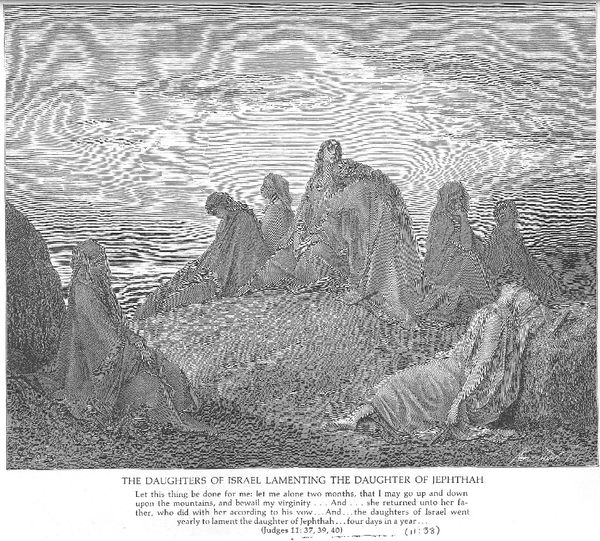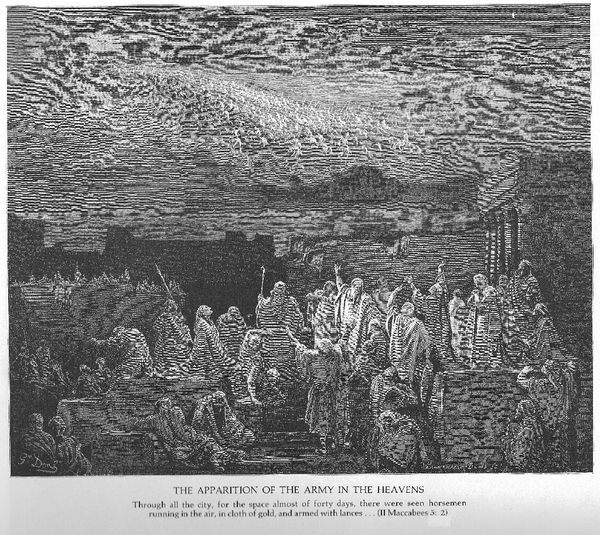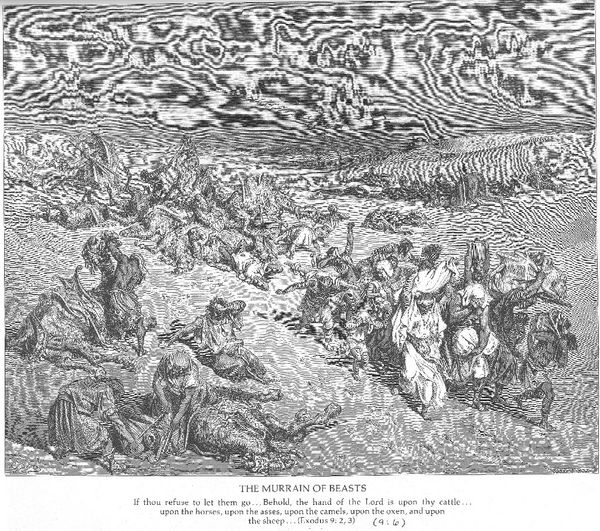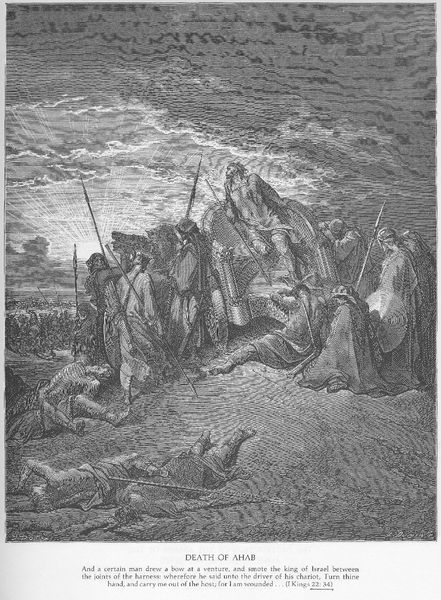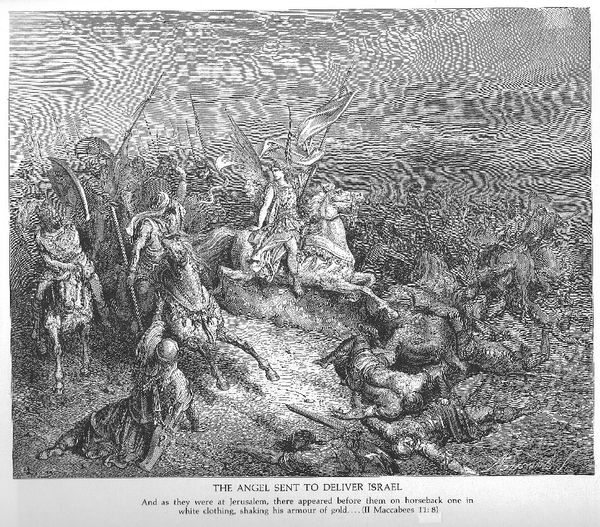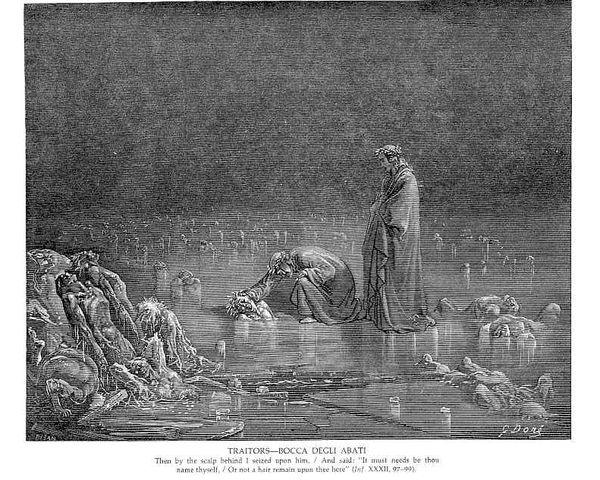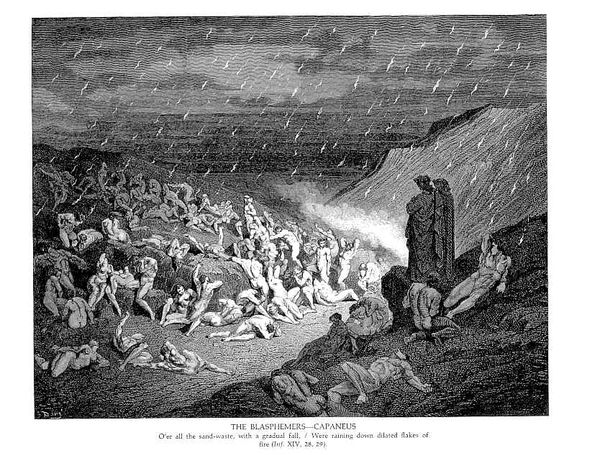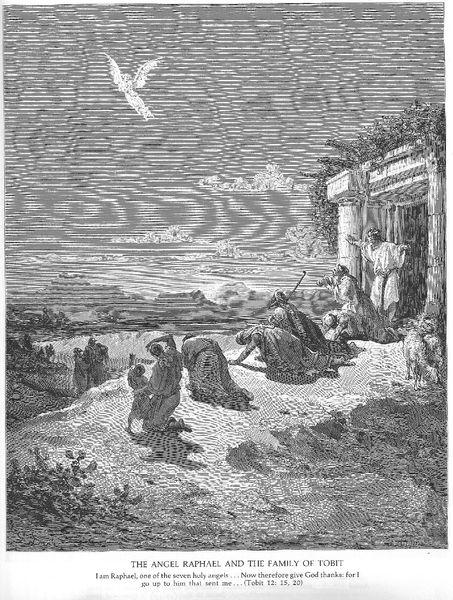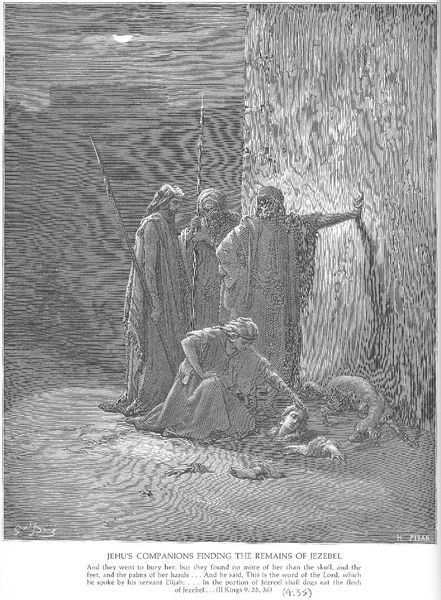
drawing, print, ink, engraving
#
drawing
#
narrative-art
# print
#
landscape
#
figuration
#
text
#
ink
#
romanticism
#
christianity
#
water
#
line
#
history-painting
#
engraving
#
christ
Copyright: Public domain
Editor: We’re looking at a print entitled "The Ark Is Returned to Bethshemesh" by Gustave Dore. It seems to be a dramatic depiction of a scene from the Bible rendered with intricate line work, full of tiny details. What strikes me is the overwhelming landscape. What do you see in this piece that gives it context? Curator: As a historian, I am fascinated by how Doré, living in 19th-century France, interpreted and visualized this biblical narrative for a contemporary audience. His dramatic landscapes aren't just scenery; they serve a socio-political function, suggesting the vastness and power of divine intervention in human affairs. Consider the visual economy: how does Doré use the landscape to reinforce themes of the sublime? Editor: Sublime... you mean, making you feel small and insignificant? Curator: Precisely! But also awestruck, right? These grand religious paintings of the Romantic period served the need to reinforce specific ideas about nationhood and morality at a moment of great social and political upheaval. Who controlled imagery held an incredible amount of power. Now, thinking about the intended public, what sort of narrative do you think they would’ve extracted from the image, knowing that the bible may have been only for the wealthiest among them? Editor: Probably, this print makes the religious story more relatable and awe-inspiring at the same time, it gives power to the story but brings it to every home, no matter the income. Is this how the Bible started being read widely? Curator: That's part of it, indeed. This way of popularising biblical scenes opened a lot of possibilities! So, reflecting on it now, has your understanding shifted from your initial reading of this print? Editor: Absolutely. I’m thinking more about how prints made religious narratives available and digestible for a wider audience, reinforcing certain ideologies and social structures along the way. Curator: Exactly. Understanding the social role of religious imagery provides us insights into the broader cultural values and power dynamics of that era.
Comments
No comments
Be the first to comment and join the conversation on the ultimate creative platform.
